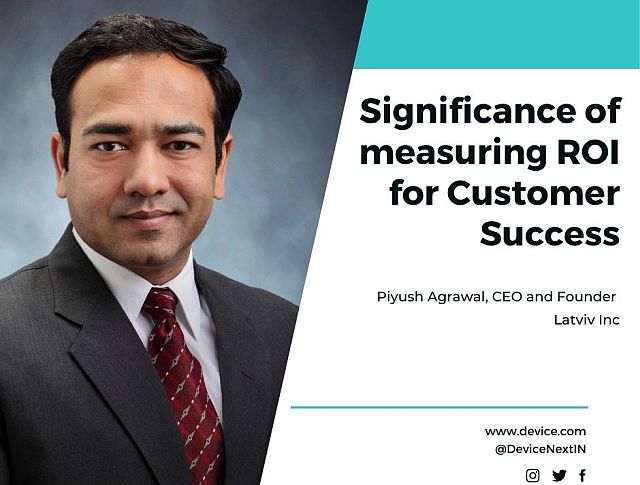To truly understand the return on investment (ROI) in the context of customer success, one must imaginarily travel back hundreds of years when traders in India conducted business under a banyan tree (which incidentally got its name from the word “baniya” that stands for traders.) In those days, relationships were more important than anything since there was nowhere else to conduct business given travel limitations. Therefore, it was crucial in those times to deliver on promises. Realized promises built trust, resulting in repeat business, which formed today’s most prominent corporate empires.
Times have changed today, but the business principles stay the same. Resourceful businesses generate solid value for their customers. Latter, keep coming back for more like how investors flock back to re-invest their earnings in areas that generate substantial returns. The best sales arrangements are built on clear objectives and promised returns on investment (ROI). This principle holds when both seller and buyer representatives are vested in their respective companies’ interests. However, in the real world, all transacting parties have personal interests as well. Further, the representing individuals may not undertake the effort to document the buyer’s objectives and ROI thoroughly. So, let’s explore how to handle these challenges and more.
First, let’s define ROI. Broadly, increase in revenue, cost reduction, and risk mitigation are generally the three areas where vendors add value for their customers. Based on the seller and buyer’s business, the product or service objective could be:
● More efficiencies (lower labor cost), either more with less, or reallocation of labor for higher-value work or
● Reducing the quantity of the raw materials or
● Better quality of the product or
● Favorable pricing or
● Newer product streams
● Reducing the quantity of the raw materials or
● Better quality of the product or
● Favorable pricing or
● Newer product streams
It is generally a good idea to capture the expected transaction outcome in terms of bottom-line impact (read $) by factoring in the cost of labor, raw materials, and vendor’s service or product fees. In addition, it would be best if you remembered that the buyer’s resources need to incur their time to fully incorporate the vendor’s solution, make it operational and realize its benefits.
Now that we have a basic understanding of ROI, let’s dive into the intricate aspects of managing customer success through the complex dynamics of people, process, systems, and data framework so as to generate the best ROI.
People
A dedicated customer success team is a must for SaaS companies. We notice that IT service organizations are also steadily employing CS professionals to support their company partners and customer-facing directors. “Out of sight, out of customer’s mind” is a critical risk that CSMS should monitor continuously. The team should have the skillset to prepare ROI models, monitor and act on customer engagement data.
Process
Typically, vendors use ROI for value selling to create “pays for itself” budgets for substantial investment in the vendor’s product and services. Throughout the customer’s lifetime, customer success professionals work with their counterparts to revisit these ROI models during business review meetings primarily to retain customers, to upsell and cross-sell products. Customer contacts ask for business case justification from their vendors to get continued funding approvals from the CFO. CS professionals typically extrapolate (i.e., “guesstimate”) potential value and then request their customer contacts to confirm and jointly update their models. When the customer user base is distributed but collectively provides good revenue, CS professionals can still mockup and send ROI models via email campaigns that product users can use to evaluate the continued value.
Systems
A customer success solution becomes paramount in managing all participants’ personal and corporate interests, end-user usage, training needs, business case articulation (read ROI), and the whole nine yards. The data multiplication is too much to manage in Excel or multiple systems such as CRM, help desk, etc. The single source of the truth in one system becomes essential. This system should be your end-user ongoing customer data management platform since the current CRMs cannot go beyond sales support and documentation.
Data
I separated data from systems to highlight the specific nature of customer information. This data resides in SaaS provider and third-party systems and includes usage by feature, logins, performance, health, satisfaction, NPS scores, and financials. At times, these data elements become a proxy for ROI models under the pretext that if end users are using your systems often and satisfactorily, they must indeed derive value.
Conclusion
As you look for approaches to sell more and sustainably, this mindset of the sell-side party, i.e., vendor, will lay a solid foundation of customer success. While ROI models may not be perfect, you must start with an initial one and fine-tune it as you learn more from your customers. Happy selling!
As you look for approaches to sell more and sustainably, this mindset of the sell-side party, i.e., vendor, will lay a solid foundation of customer success. While ROI models may not be perfect, you must start with an initial one and fine-tune it as you learn more from your customers. Happy selling!



